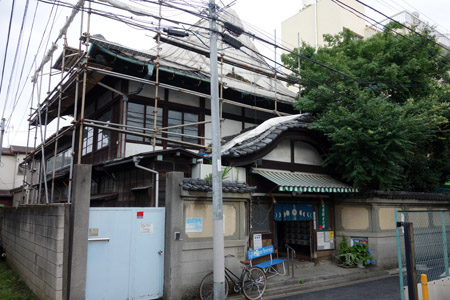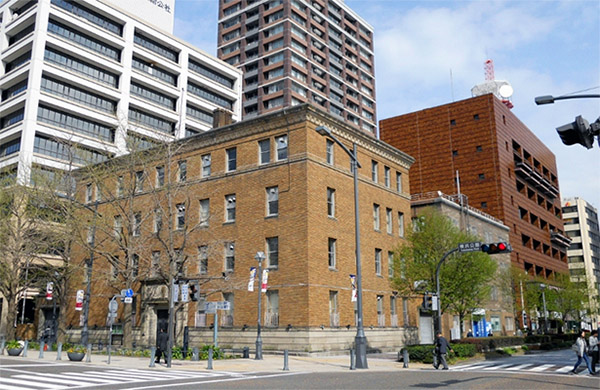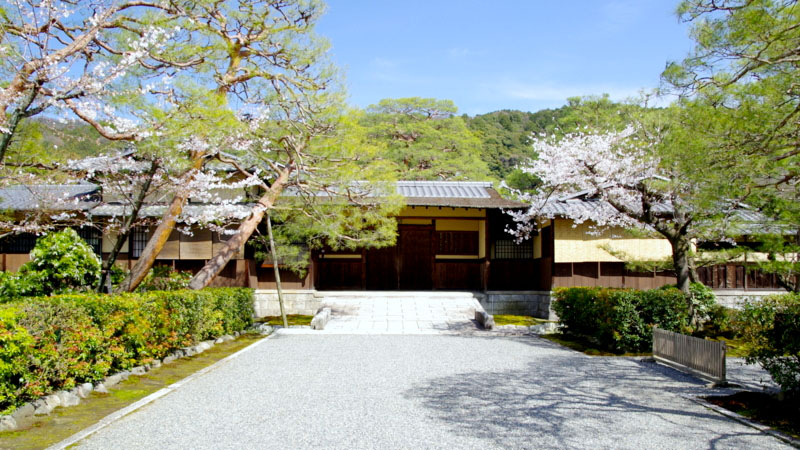99-year old residence in Kamakura opened to public for first time

A historic residence in Kamakura that was once the holiday home of former Prime Ministers Fumimaro Konoe (1891 - 1945) and Osachi Yamaguchi (1870 - 1931) has been repaired and converted into a French restaurant and wedding function centre. This historic, privately-held home had been closed to the public until now.
The Koga Residence was built in 1916 as a villa for Seijiro Sho (1862 - 1926), the managing director of Mitsubishi. In 1937 it was purchased by Mr. Koga, a manager of Nippon Tochi-Tatemono, and has been in the Koga family ever since.Read more
89-year old bathhouse to close this month

One of Tokyo’s oldest wooden bath-houses will close its doors this month, and there are concerns that the 88-year old building could soon be demolished.
The Tsuki-no-Yu bath-house was built in 1927 in a ‘hafu’ curved gable style, which is often seen on temples and shrines. Mr. Yamada, the 70-year old owner, said his father purchased the bath-house in 1933 from its former owner.Read more
Kyoto’s machiya revival
The traditional wooden merchant houses (machiya) lining the streets in Kyoto are a defining part of the historic city’s atmosphere. Yet, over 5,000 of these machiya are vacant, and approximately 2% of them are demolished each year.
Some of these homes are being converted into guesthouses and have been very popular with foreign visitors.Read more
Historic Yokohama building to be converted into shared office

The historic former Kanto Local Finance Bureau building in downtown Yokohama will re-open in 2016 as a restaurant and shared office space after undergoing restoration and renovations.
The heritage listed property was built in 1928 and was originally the Yokohama ranch office of Nihon Menka - a raw cotton importer that is now Sojitz Corporation. It was temporarily confiscated by the US during the occupation in 1952, before being sold to the national government in 1954. From 1960 it was used as the Yokohama branch of the Ministry of Finance. Yokohama City acquired the 4-storey concrete building in 2003.
In August 2014, Yokohama City started an appeal to find suitable uses for the building. The Yokohama DeNA BayStars baseball team were selected out of nine applicants to manage and operate the building.Read more
Starbucks opens store in historic former home in Aomori

On April 22, Starbucks will open a store in a heritage listed building in Hirosaki City, Aomori Prefecture. This is the first Starbucks store in the city, and the first Starbucks store to be located in a local government owned property. Starbucks Japan operates over 1,000 stores across the country, including four in Aomori Prefecture.
The Hirosaki Koen-mae Store will open in a building that was built in 1917 as the official residence of the Commander of the 8th Division in the Imperial Japanese Army. It was designed by Hikosaburo Horie, the eldest son of Sakichi Horie who was a carpenter that worked on many of the western-style residences built in Aomori during the Meiji period.Read more
Original Kanaya Hotel re-opened to public viewing

After a careful restoration, the historic Kanaya Samurai House in Nikko was re-opened to the public from March 29th. The property forms a very significant part of Japan’s hotel industry as it was the very first western-style hotel in Japan.
The 2-storey wooden house was built in the 1640s as a samurai residence. In the late 1800s it was the residence of Zenichiro Kanaya. Mr. Kanaya was inspired to open up his home to foreign guests after hosting a foreign friend, James Curtis Hepburn, a Christian missionary who created the Hepburn romanisation system for Japanese. Mr. Hepburn saw the appeal of the Nikko area and the potential for foreign visitors, and suggested that Mr. Kanaya create accommodation catering to foreign tourists.
Mr. Kanaya made some alterations to the home and opened it up to guests as the Kanaya Cottage Inn in 1873. British traveler, writer and historian, Isabella Bird, wrote about her stay at the inn in 1878 in her book ‘Unbeaten Tracks in Japan’, which further helped to promote the area and the hotel.Read more
Nanzen-ji: Japan’s most expensive and exclusive residential area

London has Kensington Palace Gardens, Hong Kong has Pollock’s Path and Monaco has Avenue Princesse Grace. Japan’s most expensive and most exclusive neighbourhood is not in Tokyo, but in the grounds of a temple in the historic former capital of Kyoto.
Nanzen-ji is a Zen Buddhist temple that was first established in 1291 by Emperor Kameyama on the site of one of his former palaces. During the anti-Buddhist movement at the beginning of the Meiji Restoration, Nanzen-ji’s grounds and sub temples were seized by the government, subdivided and sold off to private interests. Between the Meiji period and early Showa period, Japanese nobility began to build luxurious holiday homes with expansive and carefully designed Japanese gardens.
Competition amongst the elite was strong, with each one trying to build a bigger and grander villa than the other. Today, 15 of the original villas remain. Many of these villas are still owned by descendants of the original owners, or are held by some of Japan’s top companies and are not open to the public. These estates are worth as much as 100 million USD, but are so tightly held that, no matter how much money you may have, the area cannot be bought into at any price.Read more
